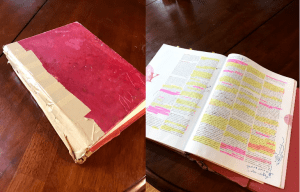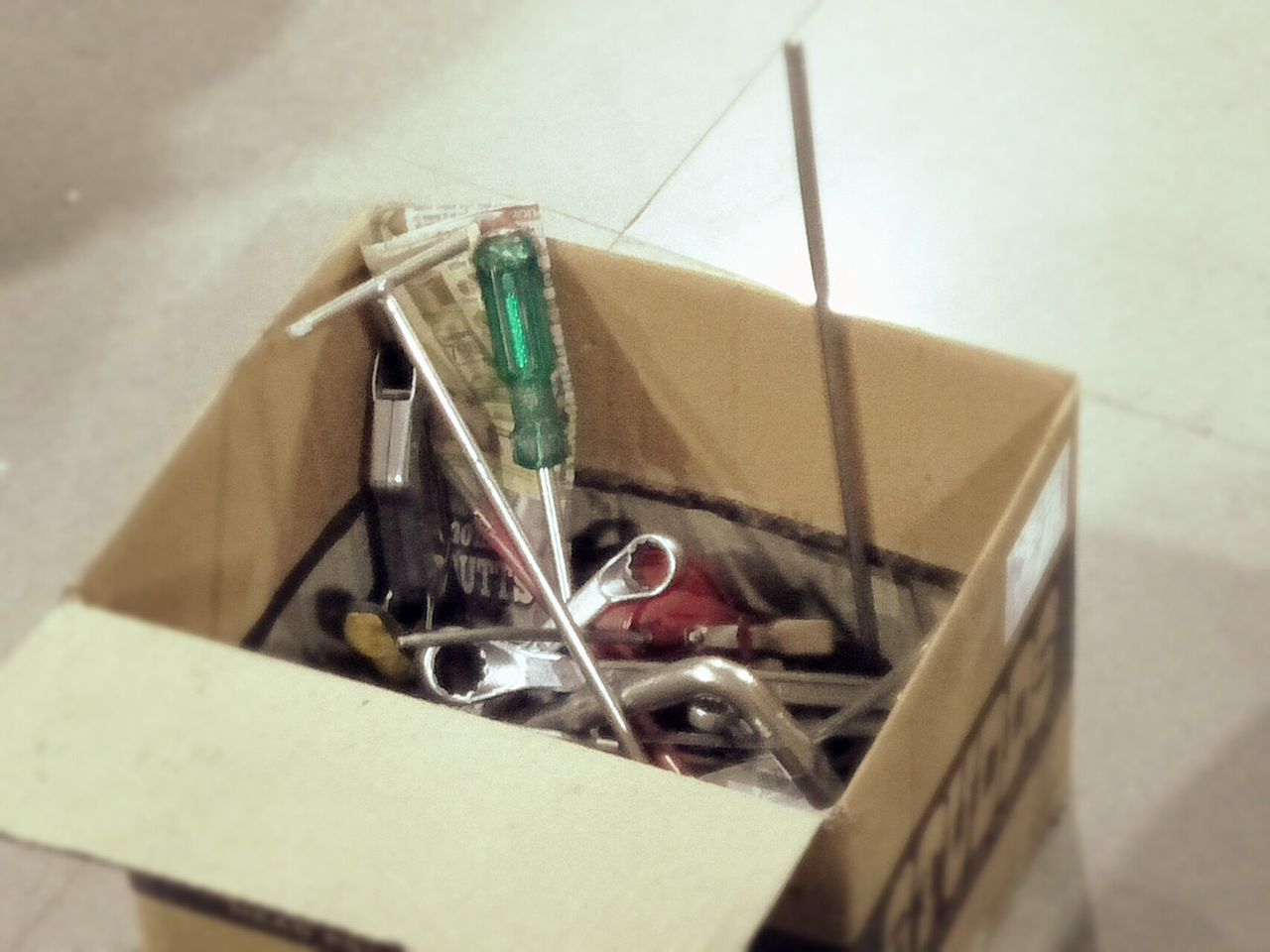
A very well loved and well-used tome.
Including yours truly.
Because frankly there is a lot of silly stuff everywhere. Case in point: Champagne Masters and their Bull Shit.
However, that doesn’t mean you should hide in a cave, clinging to your old worn out and marked up copy of The Oxford Companion to Wine. As with trying new wines, its always worth exploring different opinions and voices. But remember, just like with wine, you don’t have to swallow everything.
Sometimes it’s good to spit, like with some of the advice that Barri Segal is giving in their Cheat Sheet article titled “Things You Should Never Say at a Wine Tasting.”
The article starts with some good advice about using wine tasting events as a chance to try new things. It also includes helpful tidbits about not assuming that only women drink rosés, not chastising people for using spit buckets or trying to pour your own servings. Some of Segal’s advice is indeed worth swallowing. But there is also a lot worth spitting out.
So let’s grab a spit bucket and take a gander at Segal’s most “spittable advice.” I’m going to be using Segal’s numbering which gets a little weird with multiple #7s and #10s.
2. “Which type of barrel was this wine aged in?”
For this entry, Segal is referencing Kris Chislett’s post on Blog Your Wine titled Pretentious Things to Say at a Wine Tasting, Should You Want to , written as satire under the “Funny” category. But Segal takes the idea that you shouldn’t ask what kind of barrel is used to make wine because all that matters is if the wine tastes good.
Bull shit.

Now if you start asking which particular forest the barrel wood came from…
The point of wine tasting is to learn what you like. One thing that is helpful is noticing patterns.
You may notice that you like wines with sweet vanilla and coconut flavors. Chances are those are wines were aged in American oak barrels.
You may see that you like more subtle baking spices like cinnamon, clove and nutmeg. Most likely those were wines aged in French oak barrels.
You may end up liking something that has only a little bit of those oak flavors. For you, knowing that the winemaker is just aging part of their wines in new oak (which gives the most intense flavors) and part in neutral oak barrels (barrels that have been used 3 or more times) is helpful knowledge.
And that is not even talking about wines aged in whiskey barrels which have very distinctive taste characteristics.
So ask away! Anyone representing a winery at these events should have this information available.
3. “What percentage malo is this wine?”
This entry was a segue from the last “faux pas” with the notation that it is “A totally idiotic question.”
Bull shit.
Segal also took this one from Chislett’s piece where Chislett notes:
“If someone at a wine tasting asks me “What percentage malo did this wine go through?”, I’ll normally respond with “Can’t you tell by tasting it?”
What?
Again, I know Chislett’s piece is satire but this is like hearing a song on the radio and asking who sings it only to be told: “Can’t you tell by hearing it?”
No, Karen. I can’t. At least not yet.

It’s Britney, bitch!
No, wait…I mean it’s 2/3 malo aged in new French oak with 1/3 kept apart in stainless steel.
Bitch.
The point of asking is to learn and just as you may eventually catch on and recognize a particular singer’s voice, you can also learn to taste malo in wine. While even Masters of Wine and Master Sommeliers probably can’t nail exact percentages of malolactic fermentation used in various buttery Chardonnays, after enough tasting you can start to get a sense if a wine was made fully malo or just partially.
It all comes back to finding patterns and learning about what you like. To do that, you need to ask questions and it is ridiculous when bloggers shame people into thinking that their questions are idiotic.
5. “I can taste the terroir in this wine.”
Alright, I’ll concede that this statement can come across in certain circumstances as pompous. But so is shaming people who may have just learned about the term terroir and are excited to explore how it relates to wine.
One of the most exhilarating moments in many people’s wine journey is that light bulb “Aha!” when you taste the differences between wines made from the same grape, by the same winemaker, in the same vintage but from two different vineyards.
On the surface, it seems like there is no logical reason why these two wines taste different but they do! And that difference is terroir! Having that light bulb go off often ignites a passion in wine lovers that encourages them to keep exploring, keep looking under the surface to figure out why these wines they adore taste the way they do.
It’s why Burgundy exists and why vineyard designated wines are often a winery’s top cuvee.
This “faux pas” also comes from Chrislett who I suspect is not being as satirical when he says:
Personally I believe that terrior plays a major role in the overall flavor of the grapes once they reach the winery, but from that point on it’s all in the hands of the winemaker. For that reason, you could also say: “…mmm, you can really taste the wine-maker in this wine!”
To which I would say, “Yes, Karen. I can. In the oak barrels they use and the amount of malo.”
7. “I’ll buy the bottle with the cool label” (or rather 7c)

Submitted without comment or judgment.
I know this chafes a lot of sommeliers and retailers to hear but, for me, as long as it doesn’t include the word “only” then I’m cool.
Let’s face it, standing in front of a literal wall of wine at a store is intimidating. There are so many choices. While you would hope that there is a knowledgeable wine steward nearby that could guide a consumer to a great bottle, sometimes there isn’t.
I would much rather have someone have a label catch their eye than nothing. It at least gives them a reason to try it rather than fall back to just drinking their same ole, same ole. If they take it home and it sucks (like, admittedly, many gimmicky labeled wines often do), then lesson learned. There is no reason to buy that wine again. They can move on to something new. If the wine shop they’re buying from is decent, they may be able to take that sucky wine back and exchange it for something else that catches their eye.
Bottom line, if you are always trying new things–regardless of the reason why the bottle interests you–then you are on the right path. I’m not going to shame you or make you feel bad for liking a cool label. But I will always encourage you to be open to trying things with sucky labels. Sometimes those are the best wines.
8. “What is Robert Parker’s rating for this wine?”
This is another thing that, admittedly, does make wine professionals inwardly (and sometimes outwardly) roll their eyes. That is because the number one mantra in the wine industry is that taste is personal. Just because a wine critic loves or loathes something doesn’t mean it’s going to match your opinion. And, really, in the end, all that matters is your opinion because you are the one who is putting it in your mouth.

The Wine-Twitteracy in still life.
But what these eye-rolling wine pros often forget is that Robert Parker, like Jamie Goode, is a tool–especially for newbie wine drinkers who are still learning what their taste is. It’s helpful to hear an expert’s opinion on a wine. But the key is to make sure that the newbie drinker knows that it is perfectly fine to disagree with the experts.
The ideal approach for those newbies is to notice how their tastes calibrate with the experts with certain wines. They may find that they jive with Parker’s opinions on Rhone-style wines but find his views on Napa Cabs completely off from theirs. That’s fantastic and it sharpens the effectiveness of using that tool.
But just as our tool boxes at home aren’t limited to only a single screwdriver, so too, should we be open to the usefulness of having a variety of tools and opinions at our disposal. You might find that Jancis Robinson’s ideas on Napa Cabernets fit your taste more. Even better, you might find the tastes of your local wine shop employee and yours go hand in hand.
Indeed the best advice that any wine lover can take to heart is to keep tasting and to keep asking questions. There are no rules or right way or wrong way to go about it. It’s your time, your money, your mouth. So own that and take your own path.
But you are entirely welcome to spit all that I just said right into the bucket. In fact, I couldn’t be more proud if you did.
